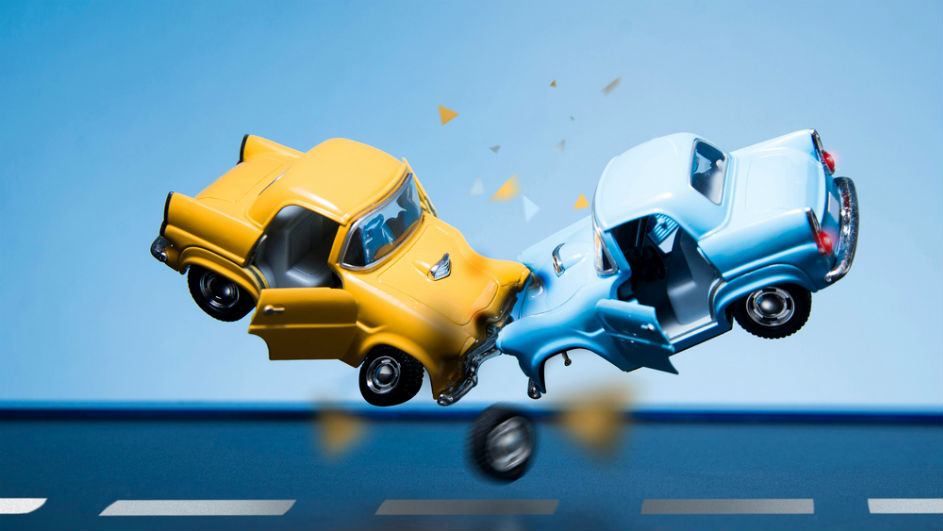
You hear people say it all the time, whether they’re in the market for a used car or a new car, you hear people say one or both of these phrases when asked what kind of car they want: “I want a safe car” or “I want a car that will get me from point A to point B.” So what exactly is it about a car that deems it as a safe car to drive? Well, there can be several answers to those questions, and you bet that these answers go far beyond the exterior of a car.
You’d be surprised at how many people go car shopping and safety is not at the top of their “must-have” list. A lot of people will walk into a dealership and pick out cars that look pretty. Well, you’ve heard people say that you can’t judge a book by its cover, right? Probably so. That saying is said as a warning on how you can’t tell anything about a person solely based on their appearance. This same theory can be used when it comes to purchasing a car. Just because a car looks good, doesn’t mean it’s a safe car, and that’s how lots of accidents occur.
Deeming a car as safe based on the make and model or whether it’s a sedan, SUV, or truck is not how you determine how safe it is, and the majority of the time, that’s how lots of consumers choose their next car. You’ll hear them say that Toyota‘s are safe cars or most SUVs are safe based on what they’ve heard… There are so many other factors that must be looked at to determine whether a car is safe.
The harsh reality of it all is that no make or model of a car is safe. Every time we get into a car, whether we’re the passenger or the driver, we’re putting our lives at risk. According to the National Institutes of Health, all drivers face risks but the factor that contributes the most to all accidents, fatal and non-fatal, are inexperienced drivers.
Because we put our lives at risk every time we set foot inside a vehicle, it’s important to make sure that you have protection. You want to make sure you and your vehicle is covered by auto insurance and in the event you get involved in an accident, you want to make sure you have access to a team of experienced personal injury lawyers to handle your case.
Primary Factors to Car Safety
When it comes to car safety, there are four major factors to consider:
- Vehicle Weight
- Crashworthiness
- Vehicle Center of Gravity
- Safety Equipment and Features
Now, although you have these main factors to consider, you also have to look at other factors that make a car safe. For instance, you can’t forget about who’s behind the wheel of the vehicle, whether it’s a new or used car. In order for a car to be considered as safe, you also need to look at yourself and ask if you’re a safe driver as well as are you doing your part as a car owner to maintain the car to keep it safe?
Weight of Your Vehicle and Its Crashworthiness
A good rule of thumb to have when looking at safety in choosing a vehicle is, the heavier your vehicle is, the better it will be at protecting you in a car accident. Obviously, a smaller car getting into a collision with a larger vehicle will endure considerably more damage than the larger vehicle but that’s why you want to check your vehicle’s crash-test ratings.
If safety is at the top of your “must-haves” list when car buying, the heavier the car is, the safer it is but you also have to consider heavier cars, tend to be more expensive, consume more gas, and still need to receive high crash-test ratings because you can purchase a heavy vehicle but it’s still not considered as very safe due to it crash-test rating.
The Insurance Institute for Highway Safety (IIHS) has put in place standards and technologies to measure a vehicle’s reaction in collisions. It’s these standards that get regularly updated with vehicle requirements that deem it safe enough to earn the prestigious “Top Safety Pick” rating. So when shopping for a vehicle, you want to also look for vehicles that have the Top Safety Pick rating.
Vehicle’s Center of Gravity and Other Safety Features
When it comes to a vehicle’s center of gravity, a vehicle’s rollover resistance plays a big part in it. Rollover accidents can occur for various reasons from weather conditions to losing control of the wheel but every crash is different… One thing for sure is that a vehicle with a lower center of gravity is less likely to flip over than a vehicle with a higher center of gravity.
Along with checking for a vehicle’s center of gravity, it’s important to check out its other safety features. A lot of safety features that used to be a perk of some vehicles have now become standards for all vehicles. Some of these safety features include:
- Automatic emergency braking
- Forward collision warning
- Lane departure warning
- Blind-spot warning
Now, although these features are meant to provide added safety to drivers, some drivers simply don’t like them, and that’s okay but these are safety features that are quickly becoming standard in many cars so you want to get as adjusted and comfortable with these standards as you can. Because safety comes first, these vehicles are equipped with the latest in safety features to prevent as many accidents as possible.
